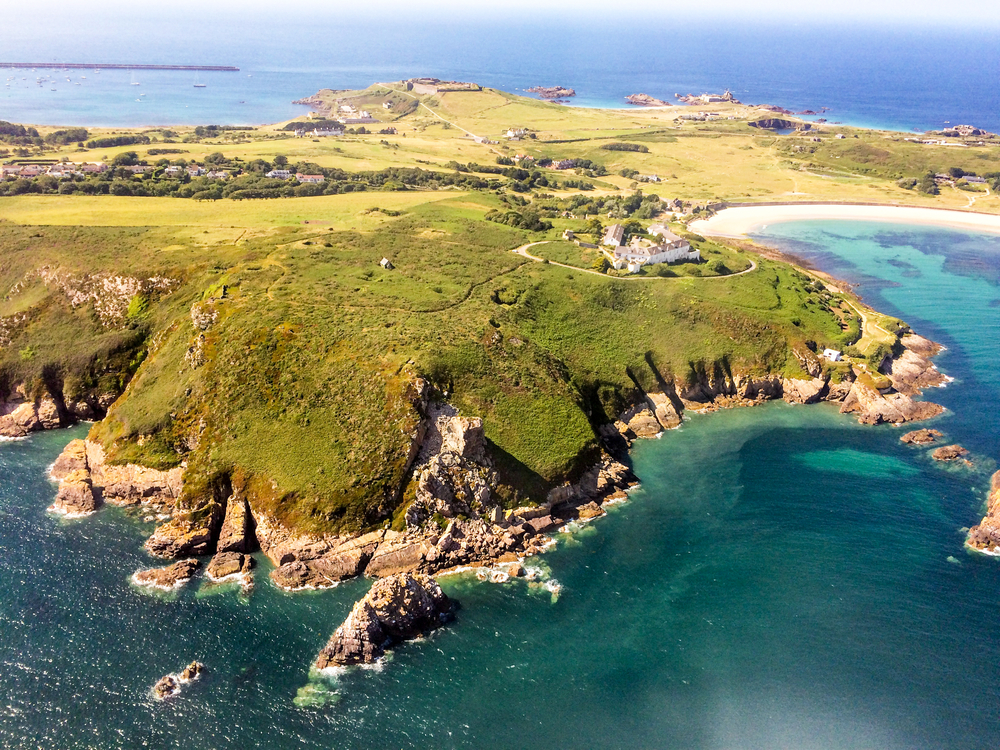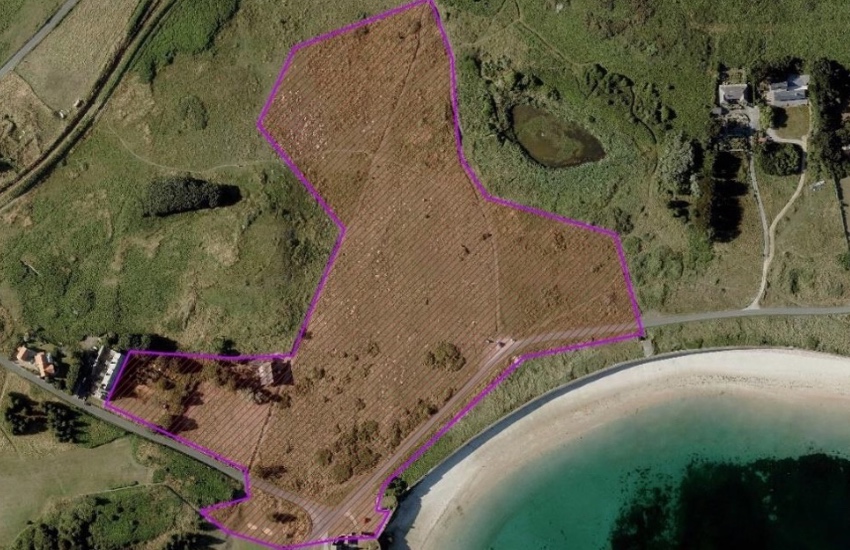


Their Royal Highnesses Prince Edward and the Countess of Wessex turned the first soil at the Nunnery in Alderney on their visit earlier this week, marking the start of the second phase of an excavation project.
The Dig Alderney project first began in August last year, when permission was first granted by the States of Guernsey to investigate four areas of particular interest.
The archaeological charity will return to the Roman Fort in the hope that excavation of the rampart on the south-east corner of the fort will reveal how the fort was repaired in the Middle Ages after the Roman east wall fell onto the beach. The rampart was then refurbished in the revolutionary and Napoleonic wars when the magazine was built against it.
Discoveries made during the 2021 dig suggested that the so-called ‘gun ramp’ on the south wall was built over the remains of a large earlier building. It is possible that this is part of the residence of the Tudor governor of Alderney.

Pictured: Two Dig Alderney projects will be undertaken on the island over this summer.
This year’s excavations will look for what could be the south and east walls of this building and investigate how the ruins were built into the modified fortifications.
Excavations will be led by Dr Jason Monaghan, Dr Phil de Jersey, and Dr Isabel Picornell of Dig Alderney, assisted by volunteers from Alderney and the Guernsey Museum Archaeology Group. The dig has the support of the Alderney Society and will take place from 26 May to 4 June.
The charity will be providing updates on the Dig Alderney Facebook page and the results will be published in the Bulletin of the Alderney Society.
The Nunnery will remain open to visitors during the excavation but public access to the dig itself will be limited due to the restricted nature of the site.
At the same time, a team lead by Dr Rob Fry of Reading University will be conducting a survey of areas of archaeological interest on Longis Common using Ground Penetrating Radar.

Pictured: The principal area of interest is the land closest to the Nunnery, including the rear of Coastguards and the Paddock Field, but if time allows, the group aim to cover the whole of the marked area shown.
The survey will use ground-penetrating radar (GPR), under the direction of Dr Fry.
GPR is a non-intrusive method of survey which directs electromagnetic pulses into the ground. Depending on the presence of buried features, such as walls, or changes in the stratigraphy below the surface, the time taken for the electromagnetic signal to be reflected to a receiver will vary.
This data can then be interpreted in various ways, including building up a 3D image of the features below ground, which can then be used to guide future excavation. GPR works especially well on deep, sandy soils, and for that reason is ideally suited to work on Longis Common.
Excavation undertaken in the Paddock Field and on the adjacent part of the Common in 2018 and 2019 showed that there is an extensive Roman settlement, which is underlain at least in part by an important Iron Age cemetery.
The group hopes that the GPR survey will reveal further details of both the Iron Age cemetery and the Roman settlement, which may also reveal whether there is an Iron Age settlement associated with the burials, and whether there is somewhere in this area a Roman cemetery associated with their settlement. In the area closest to the Nunnery it may also indicate whether there is an earlier Roman fort.
Part of the wider area of interest includes the Occupation-era cemetery, on the Common about 200 metres north of the Nunnery.

Pictured: The survey of Longis Common will be undertaken by ground-penetrating radar technology.
It is possible that the GPR survey will produce better-quality evidence of what may lie beneath the surface here than any previous survey and has the potential to assist the States of Alderney in any future consideration of the subject.
Dig Alderney has said it does not wish to excavate in that area and would regard any deeper Iron Age or Roman remains to be effectively out of bounds.
The GPR survey and the assistance of Dr Fry has been funded by the Royal Archaeological Institute.
There will be an opportunity for volunteer involvement for the survey, which will take place between 27 May and 2 June.
If you would like any further information on these plans, or if you think you may be able to offer assistance, please email:
secretary@digalderney.gg (Dr Jason Monaghan) or
treasurer@digalderney.gg (Dr Isabel Picornell)
Comments
Comments on this story express the views of the commentator only, not Bailiwick Publishing. We are unable to guarantee the accuracy of any of those comments.